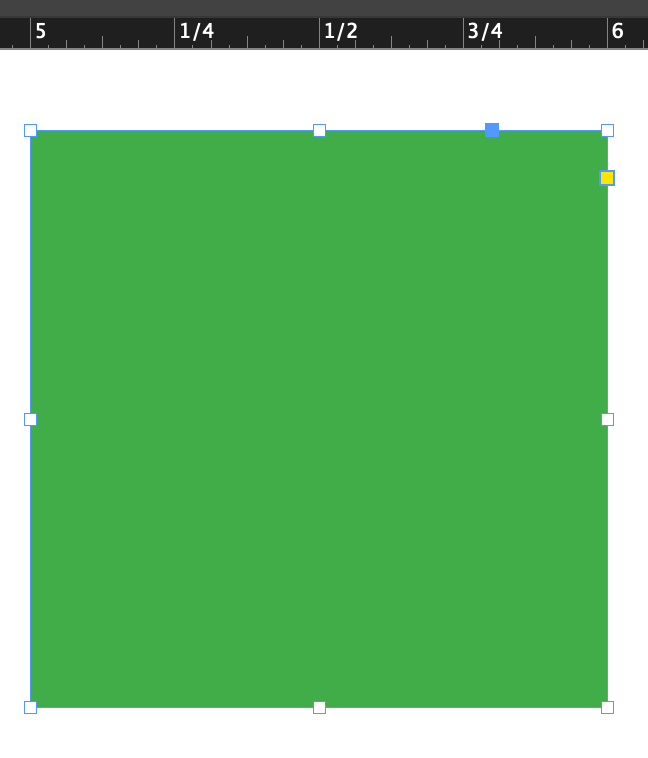Using Inches vs. Decimal Inches
From time to time, I’ve seen folks be confused about the use of decimal inches in InDesign, so I just thought I’d write up a quick post on the topic.
In InDesign there are several measurement systems you can choose from, including two kinds of inches, plain “Inches,” and “Inches Decimal.”

Choosing either one in Preferences, or by right-clicking the origin point of the rulers will not affect the measurements you see in any of InDesign’s panels.

Nor will it change the way you can enter measurement values. All the preference does is change the units that appear on the rulers themselves. (Though you can hold the Shift key as you’re dragging guides and they will snap to the ruler increments, so the results you get then will also depend on the preference).
Here’s what the rulers look like with decimal inches:

And with regular inches:

Panel fields always display decimal units. However, you can enter fractions in these fields for moving and sizing objects. You just have to do it in a way that InDesign will accept, namely, as part of a math expression. So regardless of whether you’re using Inches or Inches Decimal, to make an object 11/16 inch wide, you enter “1+1/16” in the Width field.


You can’t just put “11/16” or “1 1/16” because then InDesign thinks you want 11/16 of an inch. You need the plus sign to tell InDesign to add the 1/16 to the 1.
By the way, you can just as easily put the fraction first and get the same result.

Now that we all understand InDesign’s decimals and fractions, we can contemplate other mysteries like when will the US ever switch to the metric system…




> when will the US ever switch to the metric system
Yes, when?!
Peter, there’s nothing like having to pause for 30 seconds to figure out whether 11/32 of an inch is larger or smaller than 3/8 of an inch. It’s something those of us in the US enjoy torturing ourselves with, apparently. :)
*mumbles something about working in picas to make things easier*
YES!
I’ve been working in picas and points (the modified digital version) since the mid 90s, and I am convinced it’s the way to go. Type, leading and rule weights already use this standard, so there’s good reason to use it for everything else. Yes, it takes just a modest amount of time to learn, but it’s completely logical, mathematically solid, and it works very well with inches. Give it a good go … you might be surprised at how much precision and control it affords.
With the majority of the world using metric, why is metric not made the default unit of measurement? And please no soft conversion from Imperial
My InDesign installation is in metric by default. I’m in France, but using an English-language version. On the other hand I get irritated at having to change Acrobat’s display units from inches to centimetres. (Especially at the moment, having suffered several computer accidents necessitating reinstallation.)
…and for those thinking that metric is “newer” than “imperial” it’s actually the other way round, the imperial system was not standardized until after the metric!
Inches are madness! Never use them here in the UK for printwork anymore. They were dropped 40+ years ago.
And don’t forget – on a lot of rulers made in China, they use the “Chinese Inch” which is substantially different than either metric or US. What a mess. USA needs to join the rest of the world in metric.
The U.S. is slowly converting to the metric system, inch by inch…
Great to know how to finesse the inch measurement!
One obvious thing it took me a while to grasp is that decimal inches are divided by 10 and inches are divided by 8 with the sole purpose of chipping away at the sanity of people entering a measurement in a field and not being able to line that object up to a tic on the ruler. ¯\_(ツ)_/¯
The sticking point is the paper industry – all paper sheets are still calculated and sold in inches. Would you know how to spec an 8.5″ x 11″ sheet in the metric equivalent off the top of your head?